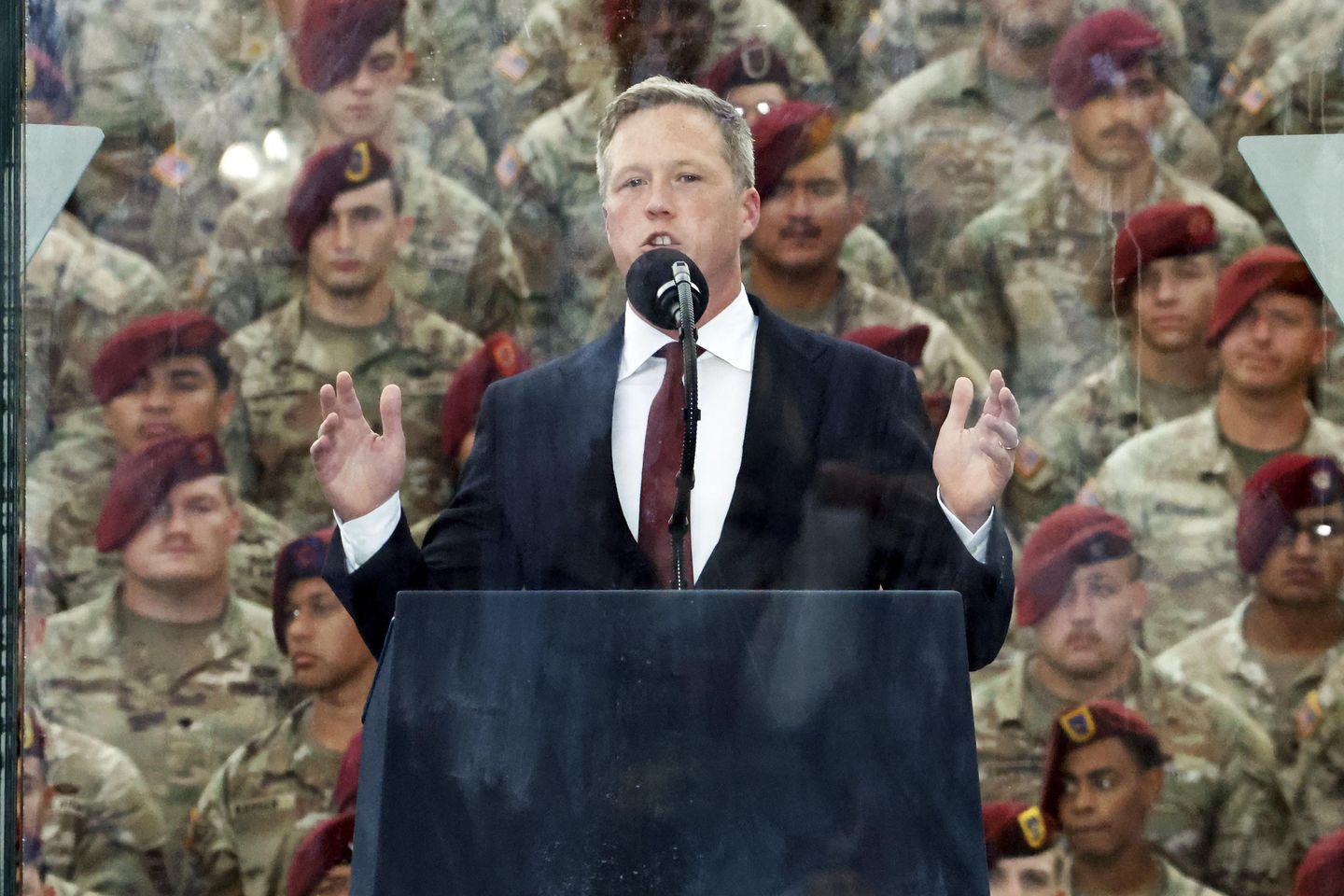
A soldier who doesn’t report for duty within three hours will be formally considered “absent-unknown” on the unit’s duty roster. Family members will be notified if the soldier remains missing for eight hours, according to a recently released directive from Army Secretary Dan Driscoll.
In the past, a soldier would not be considered AWOL for 48 hours, but now the Army’s top civilian leader wants the service to initiate the process within hours rather than days.
“The Army will always place people first and will never leave a soldier behind,” Mr. Driscoll said in his memorandum for senior Army leaders. “Army policy will reinforce our focus on caring for soldiers and families.”
The directive is the latest attempt by Army officials to respond to scathing criticism of the way it has handled missing persons cases in the past, most notably the April 22, 2020, murder of Spc. Vanessa Guillen. She was murdered by a fellow soldier, Aaron David Robinson, who bludgeoned her to death inside a unit armory at Fort Hood, Texas. Her remains were found more than two months later, buried along the Leon River near Fort Hood.
Unit leaders and Army law enforcement officials will “make every effort” to track down any missing soldier who has been identified as “absent-unknown.” That includes issuing a “Be on the Lookout,” or BOLO, warning to local police. The information must then be added to the National Crime Information Center database, Army officials said.
“If the soldier cannot be located within 48 hours, commanders will make a determination as to whether the soldier’s absence is voluntary or involuntary,” the directive stated.
Vanessa Guillen’s sister said it brought tears to her eyes when she learned of the new directive ordering Army leaders to accelerate the process when a soldier can’t be found.
“It feels like it was just yesterday,” Mayra Guillen wrote Monday on X. “The safety of our service members is vital.”
If a soldier can’t be located within 48 hours, the commander will make a determination if the absence is voluntary or involuntary. The directive provides a checklist of steps to take, including checking with local medical treatment facilities and asking other troops in the unit if they believe the soldier’s absence is involuntary.
The missing soldier will be identified as Absent Without Leave [AWOL] if the commander determines that the absence is voluntary.
“If there is credible evidence to determine the absence is involuntary, or if there is insufficient evidence to conclude the absence is voluntary, soldiers will be reported as ’missing,’” Mr. Driscoll said in the directive. “Commanders will report as missing any soldier who indicates the potential for self-harm and is not located during the initial 48 hours.”
After they are notified by unit commanders, Army law enforcement officials have three hours to submit the case to the Army Law Enforcement Reporting and Tracking System, known as ALERTS. Adding the case to the NCIC database will automatically notify civilian law enforcement agencies about the case. They will be told to notify the Army if they come in contact with the missing soldier, according to the new directive.
Specialist Guillen’s case occurred during the COVID-19 pandemic, which Army officials said significantly affected the way units at Fort Hood conducted day-to-day operations. Shelter-in-place policies were introduced, limiting face-to-face interactions.
An Army investigation determined that her unit at Fort Hood didn’t follow proper personnel accountability standards. Attorney Natalie Khawam, who represented Specialist Guillen’s family, said the policy update from Secretary Driscoll was laudable.
“If they had this policy in place at the time Vanessa went missing, the Army would have quickly contacted the police and actually started searching for her themselves,” she told the Military Times newspaper.










